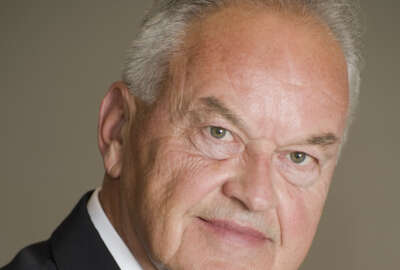 Exclusive
Exclusive Millionaire feds need to watch proposed tax changes. So do you
Federal workers and others trying to build substantial retirement nest eggs could be hit with future face limits on how much they can invest and save.
Federal workers and others trying to build substantial retirement nest eggs could be hit with future face limits on how much they can invest and save. With a growing number of federal workers joining the Millionaires Club, tax experts say the self-made millionaire civil servants might want to pay more attention to both current and proposed changes in tax rules that could limit their retirement income by capping how much they have in their TSP or 401k accounts.
As yesterday’s column reported, there are now more than 3,200 participants in the federal Thrift Savings Plan with account balances of $1 million or more. There are another 18,846 with TSP accounts ranging between $750,000 and $999,000 in value. The jewel in the TSP crown is someone with an account balance of $4.6 million. The number of civil service millionaires is expected to explode in the future. As of January 2016, there were 92,092 TSP participants whose account balances ranged from from $500,000 to $999,000. They had been investing in the TSP for an average of 27 years, meaning some (perhaps many) have 10, even 20 more years to invest … up to a point. To check out those numbers, click here.
On his For Your Benefit radio show yesterday, tax expert Robert Leins cited the millions-among-us-column, and said feds should keep an eye on plans to cap the amount of money people can have and invest in 401ks and other retirement plans, like the TSP. Leins said the Obama administration’s budget proposes “a rule that would limit any NEW contributions to retirement accounts once the total account balance across all retirement accounts reaches $3.4 million.” If the account balance fell below that level, under the proposal, individuals could again make tax-deferred contributions until they hit the $3.4 million mark.
Now that Congress is a majority-millionaires club, many members of the House and Senate might want to track plans to limit contributions to high-roller retirement accounts. In 2014, the New York Times reported that more than half the members of the House and Senate were millionaires. At that time, according to congressional financial filings, Rep. Darryl Issa (R-Calif.) was the single richest member of Congress, thanks to a business he started in California. His net worth was given as ranging between $330 million and $598 million. While many politicians made the big bucks BEFORE running for office, a large number also became millionaires while on the job, despite their relatively modest salaries. Some married well. Others made remarkably astute investments.
On his show yesterday, Leins pointed out that the administration proposal to bar investments after the $3.4 million limit had been hit would apply to “all account balances across all types of retirement plans (not just IRAs).” He said they would “be aggregated to determine if the threshold had been reached each year.” Tracking those accounts, which would be constantly moving targets, would put added burdens on the already over-stretched Internal Revenue Service.
“The dollar amount threshold is based on the cost-of-purchase of a lifetime joint-and-survivor immediate annuity at age 62 for the maximum defined benefit pension about of $210,000,” he said, “which means the dollar amount could change due to both inflation-indexing of this threshold, and also any shifts in annuity costs as interest rates and mortality tables change over time.” To listen to the full program click here.
Nearly Useless Factoid
The giraffe has the same number of vertebrae in its neck as humans do. Giraffe have seven cervical vertebrae, but each one can be about 10 inches long.
Source: Giraffe Conservation Foundation
Copyright © 2024 Federal News Network. All rights reserved. This website is not intended for users located within the European Economic Area.
Mike Causey is senior correspondent for Federal News Network and writes his daily Federal Report column on federal employees’ pay, benefits and retirement.
Follow @mcauseyWFED





